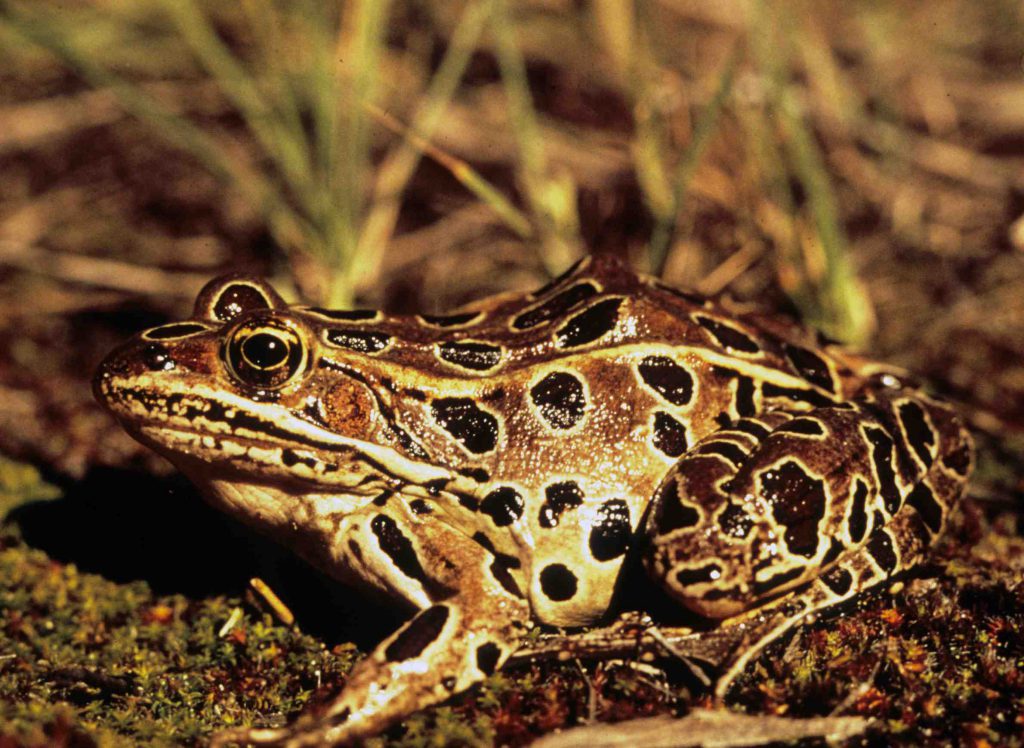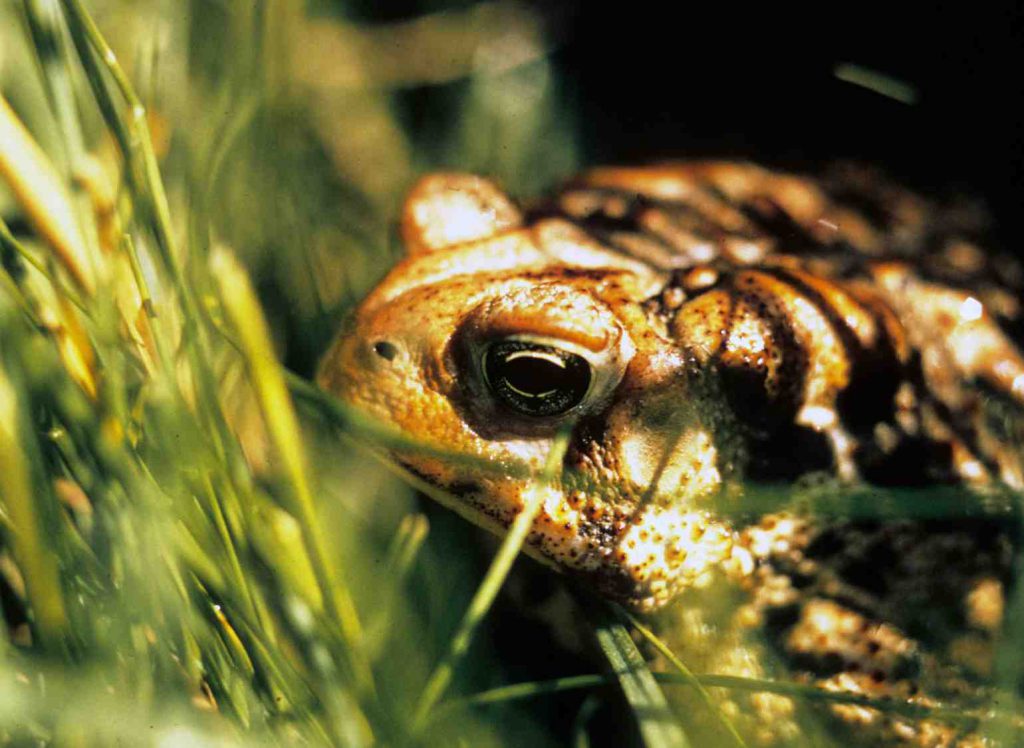Counting the State’s Frogs and Toads
Annual survey overseen by DNR covers about 100 roadside routes across the state, measuring growth or decline.

Northern leopard frog. Photo from the Wisconsin Department of Natural Resources (CC BY-ND 2.0).
For decades, biologists have observed a ongoing decline in the number of frogs and toads around the world. About 30 years ago, concerns about this issue led the Wisconsin Department of Natural Resources to create a program to track the amphibian populations.
The Wisconsin Frog and Toad Survey kicks off every April and runs through the middle of summer. Started in 1981, the citizen science program, which relies on the efforts of volunteers around the state, helps researchers monitor 12 frog and toad species.
The annual survey covers about 100 roadside routes across Wisconsin, along which volunteers stop at 10 listening stations to document breeding calls from the amphibians. Each listening station lies within hearing distance of breeding habitats — such as lakes, ponds, marshes and wooded swamps.
Andrew Badje, a conservation biologist at the DNR, said the survey has taught researchers a lot about the distribution of frogs and toads around Wisconsin.
“It’s been a really great and handy tool for us to use to document those trends in distribution throughout the state and kind of see how they’re actually doing over the past 30 years,” he continued.
One trend the survey has tracked over the last three decades is an increase in American bullfrogs (Rana catesbeiana) which were on the shortlist of frog and toad species conservationists were worried about in 1981. However, they have typically been fairly uncommon in Wisconsin, Badje said.
Volunteers pause at stops along the survey routes after sunset and listen for 5 to 10 minutes, recording whether they hear an individual frog or toad, overlapping calls or a full chorus, where individual calls can’t be separated.
Badje said experience is not required, but volunteers do need to learn the assorted songs of Wisconsin’s 11 frog species and single toad species (which are available online for listening).
“The biggest thing is that you just have the ability to identify sounds well as well as that you have the passion to just go and learn the 12 different frog calls,” he said. “It’s quite an easy activity and fun to do.”
The survey is split into three periods aligned with the calling periods of each species:
- Early spring, April 8-30, when water temperature is at a minimum of 50 °F
- Late spring, May 20-June 5, when water temperature is at a minimum of 60 °F
- Summer, July 1-15, when water temperature is at a minimum of 70 °F
The early spring period includes ephemeral wetland species like wood frogs (Rana sylvatica), spring peepers (Pseudacris crucifer) and northern leopard frogs (Rana pipiens), Badje said. Tree frogs come out during the late spring period, while bullfrogs and mink frogs (Rana septentrionalis) appear during the summer period.
Volunteers complete a route three times in one night for each period. Each route is about 10-25 miles long, with multiple stops, and takes about 2-3 hours to complete.

American toad. Photo from the Wisconsin Department of Natural Resources (CC BY-ND 2.0).
The annual survey has been a helpful source for researchers over the years, Badje noted.
“We only have a handful of employees that focus on conservation efforts,” he said about the DNR’s resources. “And getting the citizens of Wisconsin more involved … they can really cover a lot more ground than we ever could.”
It’s also offered an opportunity for people to learn about and become more involved with conservation around the state.
And the opportunity to help the amphibians isn’t exclusive to the survey, Badje said.
For one, he said homeowners should take care when you’re mowing their lawn in the summer, when there could be frogs nearby. And be aware of their habitat.
“The biggest thing that I would say is just kind of minimize the impacts that you have with wetlands and lake disturbance along the edges,” he said. “Usually it’s good to leave a little bit of a buffer strip on the edges of these waterways — that way the frogs can have somewhere to hide.”
Croaks, Ribbits And Chirps: Counting Wisconsin’s Frogs And Toads was originally published on WisContext which produced the article in a partnership between Wisconsin Public Radio and Wisconsin Public Television.

















